Vermes
Advanced Member level 4

Electronics of the presented detector is a well known kit AVT5196, closed in a housing from a printer power supply. 12V acid accumulator supplies the device. Its big advantage is that the power supply can be easily carried in a backpack to facilitate usage – so you get a portable detector. There are terminals for charging and a switch: supply – 0 – charging, and a fuse with a LED.
Probe of the detector in a test version was made of a coil with a diameter of 30cm (17 turns). The range was satisfactory, but it was difficult to find small objects, what resulted in more time searching. To solve that problem, a probe with two coils: 30cm and 16cm was prepared. 0,7mm insulated wire from a damaged electro-switch was winded on nails which were put on a chipboard of a 30cm and 16cm circle. Then the coil was wrapped in insulation tape. The ends of wire were burnt and insulation was scrapped using a knife.
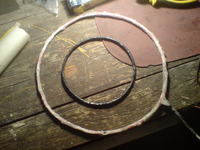
Housing was made of two circles of laminated plywood. 5 blocks of chipboard (10mm thick) were glued with Poxipol to one of the circle. The length and arrangement of blocks allowed both coils base on them.
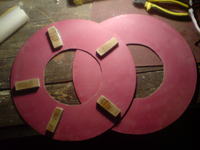
Handle for the frame was made of a thin plate of glass fiber. Two oblong holes for the handle were cut in one of the circles. Then the handle was glued with Poxipol and a hole for the cable to the inner coil was drilled.
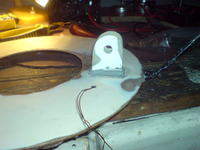
Next, both coils were put and hot glued. Shielded cables (the same as cables for CB radio antenna) were connected.
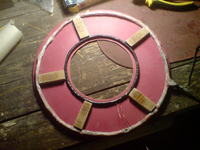
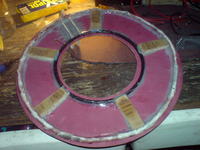
The second circle was glued with Poxipol to the probe by 5 blocks. As soon as the glue dried, gaps on sides of the probe were covered with glass fiber. Inequalities were smoothed by a simple car putty, then painted black.
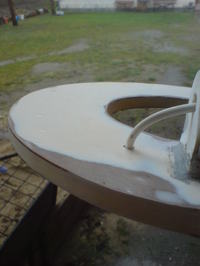
The frame can be adapted to your height and hand length. Use a broom stick, piece of PVC pipe and a tee. There is a button in the handle for switching the coils in the probe.
Elements used:
- AVT kit
- accumulator
- switches
- fuse socket
- diode
- terminals
- plywood
- housing
- chipboard
- wire for coils
- broom stick
- putty
- shielded cable
- plastic screw
- tee
- piece of PVC pipe
- Poxipol
Link to original thread (useful attachment) – Impulsowy wykrywacz metali